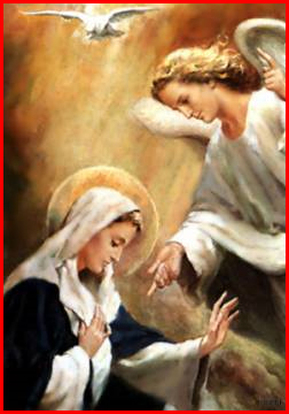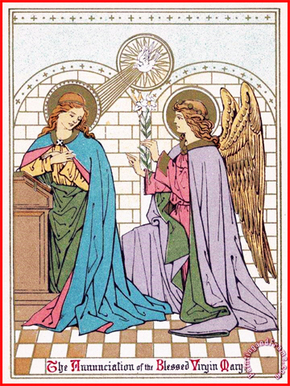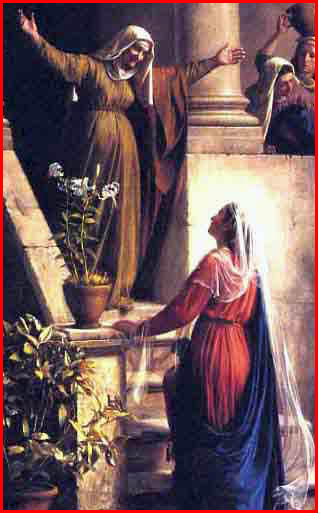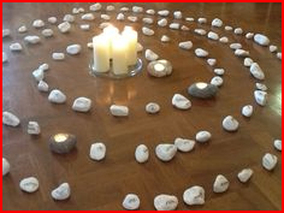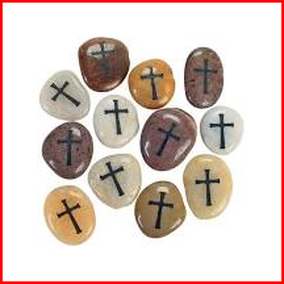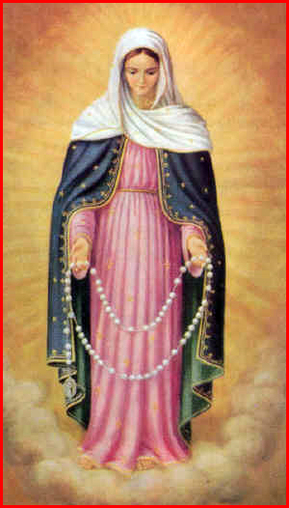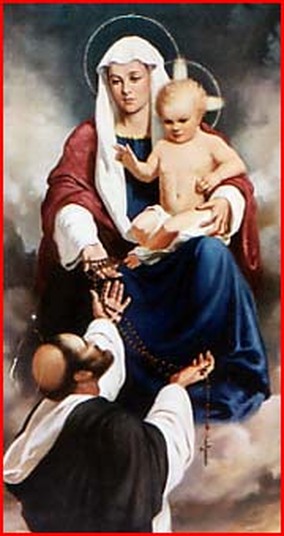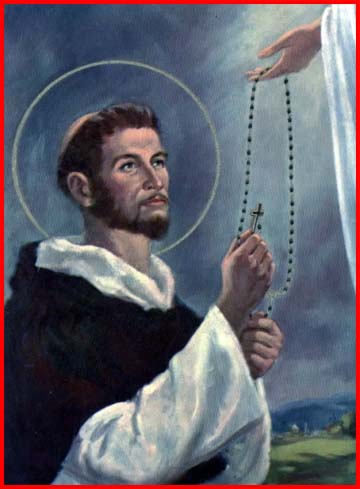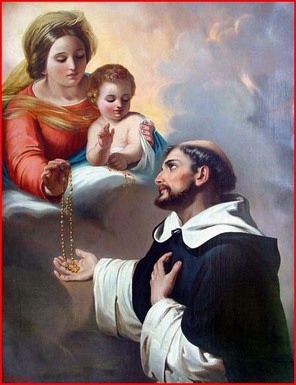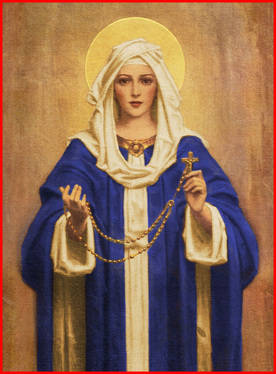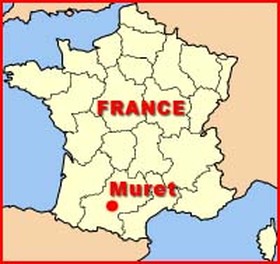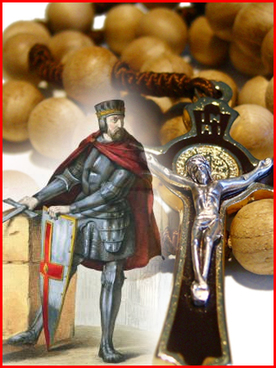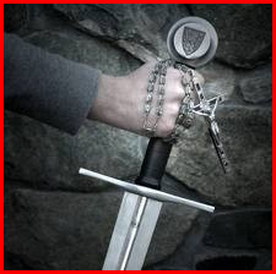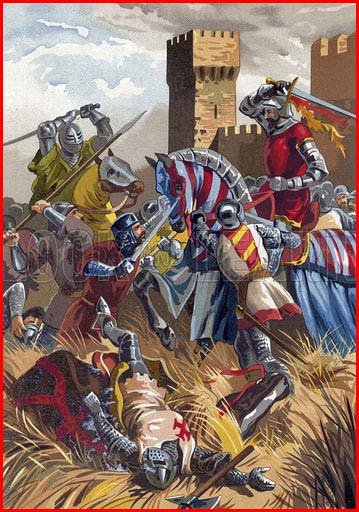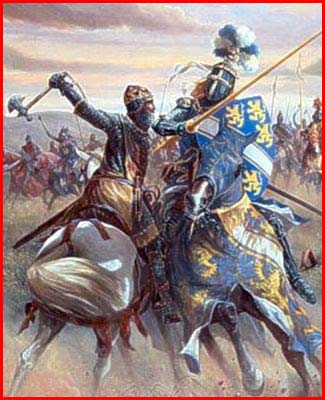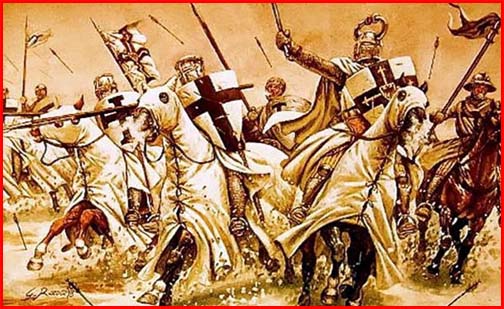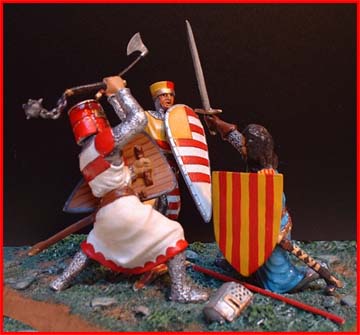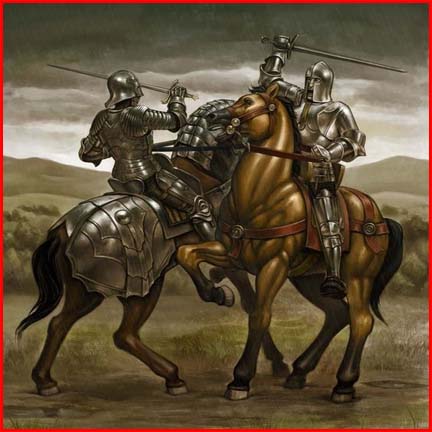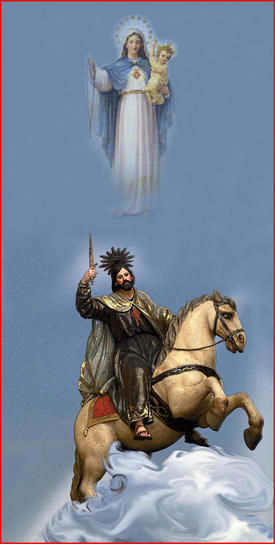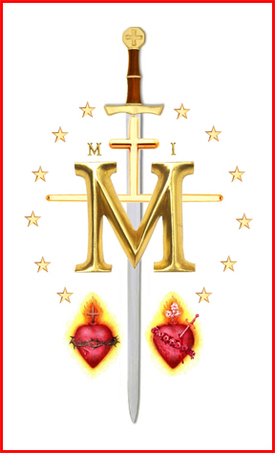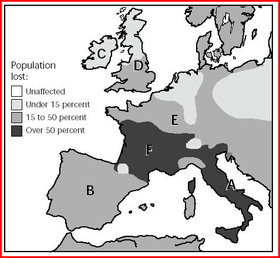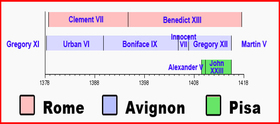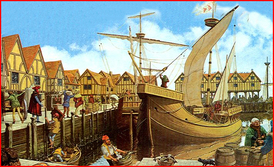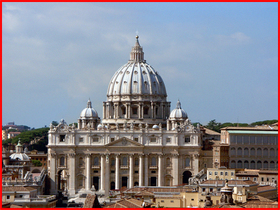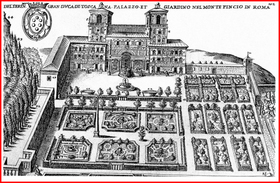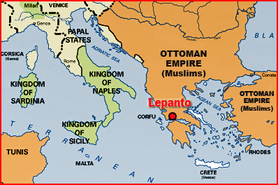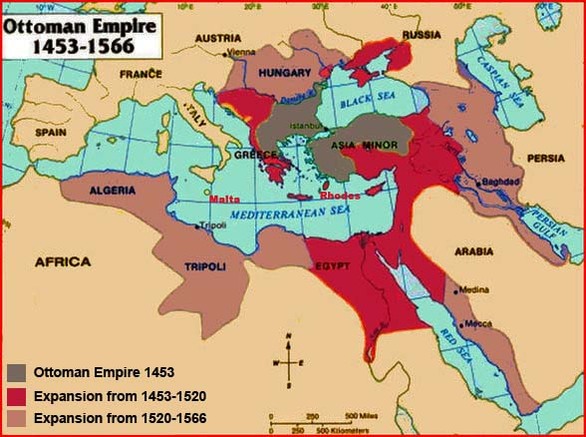| Devotion to Our Lady |
|
- Homepage
-
Daily Thoughts
- 2023 October Daily Thoughts
- Daily Thoughts Lent 2020
- Daily Thoughts for Advent 2019
- Daily Thoughts for October 2019
- Daily Thoughts for September 2019
- Daily Thoughts for August 2019
- Daily Thoughts for July
- Daily Thoughts for June
- Daily Thoughts for Easter 2019
- Daily Thoughts for Lent 2019
- Daily Thoughts for Christmas
- Daily Thoughts Easter 2022
- Sacred Heart
- Holy Ghost
-
Spiritual Life
- Holy Mass Explained
- First Friday Devotions
- First Saturday Devotions
- The Mercy of God
- Vocations
- The Path Everyone Must Walk >
- Gift of Failure
- Halloween or Hell-O-Ween?
- Ignatian Spiritual Exercises >
- Meditation is Soul-Saving
- Spiritual Communion
- Miraculous Medal
- Enrollment in Miraculous Medal
- St. Benedict Medal
- Holy Water
- Advice on Prayer
- Your Daily Mary
-
Prayers
- September Devotions
- Seven Sorrows of Our Lady
-
Novenas
>
- NV-Help of Christians
- NV-Nativity of Our Lady
- NV-Seven Sorrows
- NV- Sorrowful Heart
- NV-Pope St Pius X
- NV-La Salette
- NV-St Michael Archangel
- NV-Immaculate Heart
- NV-Assumption
- NV-Novena for Fathers
- NV-Novena for Your Mother
- NV-St Raphael Archangel
- NV-Souls in Purgatory
- NV-All Saints Day
- NV-Christ the King
- NV-Divine Motherhood
- NV-Guardian Angels
- NV-Rosary
- NV-Mirac Med
- NV- Imm Conc
- NV - Guadalupe
- NV - Nativity of Jesus
- NV-Epiphany
- NV-OL Good Success
- NV-Lourdes
- NV-St Patrick
- NV-St Joseph
- NV-Annunciation
- NV-St Louis de Montfort
- NV-OL Good Counsel
- NV-Last Supper
- NV-Passion
- NV-Pentecost
- NV-Ascension
- NV-Sacred Heart
- NV-Sacred Heart & Perpetual Help
- NV-Corpus Christi
- NV-OL of Perpetual Help
- NV-Queenship BVM
- NV-OL of Mount Carmel
- NV-St Mary Magdalen
- NV- Im Hrt
- August Devotions to IHM
- Immaculate Heart of Mary
- Litany of Dependence
- Prayers to St Mary Magdalen
- Prayers in Times of Sickness Disease & Danger
- Holy Souls in Purgatory
- Meditations on the Litany of Our Lady
- Special Feast Days
- Prayers to Mary (Mon-Sun)
- Litanies to Our Lady >
- Various & Special Needs
- Our Lady of the Rosary
- Our Lady of Mt. Carmel
- Our Lady of Perpetual Help
- Our Lady of Guadalupe
- Other titles of Our Lady
-
Rosary
- Downloads
- Consecration
- Easter Season
-
Holy Week
- Last Seven Words of Jesus >
- Characters of Passion >
- The Last Days of Christ
- Before Palm Sunday
- Palm Sunday
- Monday in Holy Week
- Tuesday in Holy Week
- Wednesday in Holy Week
- Holy Thursday (Last Supper)
- Holy Thursday (Agony & Arrest)
- Night Vigil with Christ
- Good Friday (Pilate & Herod)
- Good Friday (Way of Cross & Crucifixion)
- Saturday in Holy Week
-
Lent
- Ideas for Lent
- Daily Lenten Planner
- Daily Lenten Liturgy
- From Cold to Hot
- Lent with Aquinas
- Lent with Dom Gueranger
- Virtues for Lent
- History of Penance
- How Expensive is Sin?
- Confession of Sins
- Letter to Friends of the Cross
- Sermons for Lent
- Stations of the Cross >
- Lenten Prayers
- 7 Penitential Psalms
- Lenten Psalms SUN
- Lenten Psalms MON
- Lenten Psalms TUE
- Lenten Psalms WED
- Lenten Psalms THU
- Lenten Psalms FRI
- Lenten Psalms SAT
- Lenten Laughs
- Septuagesima
-
Christmas
- Epiphany Explained
- Suggestions for Christmas
- Food For Thought
- Christmas with Aquinas
- Christmas with Dom Gueranger
- Christmas Prayers
- Candles & Candlemas
- Christmas Sermons
- Christmas Prayers SUN
- Christmas Prayers MON
- Christmas Prayers TUE
- Christmas Prayers WED
- Christmas Prayers THU
- Christmas Prayers FRI
- Christmas Prayers SAT
- Twelve Days of Christmas >
-
Advent Journey
- Purgatory
- Christ the King
- Legion of Mary
- Scapular
-
Saints
-
Martyrs for the Faith
>
- Your Daily Martyr >
- All 365 Days of Martyrs
- Cristeros
- St Valentine & Valentine's Day
- Martyrs--Thomas Becket
- Martyrs--John the Apostle
- Holy Machabees
- Age of Martyrdom
- Carmelites of Compiegne
- Martyrs--Peter & Paul
- Martyrs--John the Baptist
- Martyrs--Andrew
- Martyrs--James the Great
- Martyrs--North American
- Martyrs--Seven Holy Sleepers
- Martyrs--Afra
- School of Martyrdom
- Martyrs--Christina
- Desert Saints >
- Saints for Sinners >
- Saints of Mary >
- History of All Saints Day
-
Martyrs for the Faith
>
- Precious Blood
- Synod 2023
-
Catechism
- Catechism Lesson 1
- Catechism Lesson 2
- Catechism Lesson 3
- Catechism Lesson 4
- Catechism Lesson 5
- Catechism Lesson 6
- Catechism Lesson 7
- Catechism Lesson 8
- Catechism Lesson 9
- Catechism Lesson 10
- Catechism Lesson 11
- Catechism Lesson 12
- Catechism Lesson 13
- Catechism Lesson 14
- Catechism Lesson 15
- Catechism Lesson 16
- Catechism Lesson 17
- Catechism Lesson 18
- Catechism Lesson 19
- Catechism Lesson 20
- Catechism Lesson 21
- Catechism Lesson 22
- Bible Study
-
Calendar
- Miracles
- Apparitions
- Shrines
- Prophecies
- Angels Homepage
- Hell
-
Church Crisis
- Conspiracy Theories
- Amazon Synod 2019 >
- Liberalism & Modernism
- Modernism--Encyclical Pascendi
- Modernism & Children
- Modernism--Documents
- The Francis Pages
- Church Enemies on Francis
- Francis Quotes
- Amoris Laetitia Critique
- Danger of Ignorance (Pius X)
- Restore all In Christ (Pius X)
- Catholic Action (Pius X)
- Another TITANIC Disaster?
- The "Errors of Russia"
- CRISIS PRAYERS
- Election Novena 2024
- The Anger Room
- War Zone
- Life of Mary
- Spiritual Gym
- Stupidity
- Coronavirus and Catholicism
- History & Facts
- Books
- Catholic Family
- Children
- Daily Quiz
-
Novena Church & Pope
- Day 01 Church-Pope Novena
- Day 02 Church-Pope Novena
- Day 03 Church-Pope Novena
- Day 04 Church-Pope Novena
- Day 05 Church-Pope Novena
- Day 06 Church-Pope Novena
- Day 07 Church-Pope Novena
- Day 08 Church-Pope Novena
- Day 09 Church-Pope Novena
- Day 10 Church-Pope Novena
- Day 11 Church-Pope Novena
- Day 12 Church-Pope Novena
- Day 13 Church-Pope Novena
- Day 14 Church-Pope Novena
- Day 15 Church-Pope Novena
- Day 16 Church-Pope Novena
- Day 17 Church-Pope Novena
- Day 18 Church-Pope Novena
- Day 19 Church-Pope Novena
- Day 20 Church-Pope Novena
- Day 21 Church-Pope Novena
- Day 22 Church-Pope Novena
- Day 23 Church-Pope Novena
- Day 24 Church-Pope Novena
- Day 25 Church-Pope Novena
- Day 26 Church-Pope Novena
- Day 27 Church-Pope Novena
- Day 28 Church-Pope Novena
- Day 29 Church-Pope Novena
- Day 30 Church-Pope Novena
- Day 31 Church-Pope Novena
- Day 32 Church-Pope Novena
- Day 33 Church-Pope Novena
- Day 34 Church-Pope Novena
- Day 35 Church-Pope Novena
- Day 36 Church-Pope Novena
- Day 37 Church-Pope Novena
- Day 38 Church-Pope Novena
- Day 39 Church-Pope Novena
- Day 40 Church-Pope Novena
- Day 41 Church-Pope Novena
- Day 42 Church-Pope Novena
- Day 43 Church-Pope Novena
- Day 44 Church-Pope Novena
- Day 45 Church-Pope Novena
- Day 46 Church-Pope Novena
- Day 47 Church-Pope Novena
- Day 48 Church-Pope Novena
- Day 49 Church-Pope Novena
- Day 50 Church-Pope Novena
- Day 51 Church-Pope Novena
- Day 52 Church-Pope Novena
- Day 53 Church-Pope Novena
- Day 54 Church-Pope Novena
- Penance Novena
- Daily WeAtheR Forecast
PART ONE : THE FOUNDATIONS & ANCESTRY OF THE ROSARY
|
Devotions Grow Gradually
Devotions, like civilizations, grow and are gradually modified over time. They take ideas from the past and modify them by adding something desirable to them. We see a classic example of that in the history of the Sacrifice of the Mass, how, over time, it was modified and beautified, while ever retaining the essential parts. Mary had parents, grandparents, great-grandparents and so on, all of whom contributed in some way to the future beliefs and attitudes that Mary would hold, and even the circumstances and geographical location in which Mary would live. Similarly, the Holy Sacrifice of the Mass borrowed much from the Jewish ritual of worshiping God, since the first Christians were mainly Jews. Yet the Holy Sacrifice of the Mass grew in its style and prayers and rubrics over the course of the centuries. It was especially in the Middle Ages that many parts of the Mass were embellished and added to. The Mass at the time of the Apostles was essentially the same as the Mass of the Middle Ages, but as regards non-essential parts of the Mass, it had been greatly embellished and beautified during the Middle Ages. Likewise, the Rosary has borrowed from ancient customs and added a Marian flavor to them. We will have a look at some of those customs to better understand why the Rosary is what it is, and better understand how it came to evolve and enrich the the spiritual life of the Church. Devotions, like civilizations, grow and are gradually modified over time. They take ideas from the past and modify them by adding something desirable to them. We see a classic example of that in the history of the Sacrifice of the Mass, how, over time, it was modified and beautified, while ever retaining the essential parts. Mary had parents, grandparents, great-grandparents and so on, all of whom contributed in some way to the future beliefs and attitudes that Mary would hold, and even the circumstances and geographical location in which Mary would live. Similarly, the Holy Sacrifice of the Mass borrowed much from the Jewish ritual of worshiping God, since the first Christians were mainly Jews. Likewise, the Rosary has borrowed from ancient customs and added a Marian flavor to them. We will have a look at some of those customs to better understand why the Rosary is what it is, and better understand how it came to evolve and enrich the the spiritual life of the Church. Counting Devices Throughout History It is obvious that whenever any prayer has to be repeated a large number of times, then some recourse is likely to be had to some mechanical apparatus that lessens the difficulty of counting upon the fingers. In almost all countries, we can find these devices that are similar in nature to prayer-counters or our modern-day Rosary beads. ► In ancient Nineveh a sculpture has been found thus described by Lavard in his “Monuments” (I, plate 7): “Two winged females standing before the sacred tree in the attitude of prayer; they lift the extended right hand and hold in the left a garland or Rosary.” ► The Desert Father would use pebbles to count the number of prayers that they had said. ► Similarly, beside the mummy of a Christian ascetic, Thaias, of the fourth century, recently disinterred at Antinöe in Egypt, was found a sort of cribbage-board with holes, which has generally been thought to be an apparatus for counting prayers, of which Palladius and other ancient authorities have left us an account. ► A certain Paul the Hermit, in the fourth century, had imposed upon himself the task of repeating three hundred prayers, according to a set form, every day. To do this, he gathered up three hundred pebbles and threw one away as each prayer was finished. ► At an early date, among the monastic orders, the practice had established itself of not only offering Masses, but of saying vocal prayers as a suffrage for their deceased brethren. For this purpose the private recitation of the 150 psalms, or of 50 psalms, the third part, was constantly enjoined. Already in 800 AD, we read of an agreement between the moansteries of St. Gall and Reichenau, that, for each deceased brother, all the priests should say one Mass and also fifty psalms. ► Mohammedans had a bead-string, consisting of 33, 66, or 99 beads, and used for counting devotionally the names of Allah, which has been in use for many centuries. ► Marco Polo, visiting the King of Malabar in the thirteenth century, found to his surprise that that monarch employed a rosary of 104 (? 108) precious stones to count his prayers. ► St. Francis Xavier and his companions were equally astonished to see that rosaries were universally familiar to the Buddhists of Japan. ► Among the monks of the Greek Church we hear of a cord with a hundred knots, which was used to count genuflections and signs of the cross. ► Similarly among the Knights Templar, whose rule dates from about 1128, the knights, who could not attend choir, were required to say the Lord’s Prayer 57 times in all, and, on the death of any of the brethren, they had to say the Pater Noster a hundred times a day for a week. To count these accurately there is every reason to believe that already in the eleventh and twelfth centuries a practice had come in of using pebbles, berries, or discs of bone threaded on a string. It is in any case certain that the Countess Godiva of Coventry (c. 1075), left by will to the statue of Our Lady in a certain monastery, “the circlet of precious stones which she had threaded on a cord, in order that by fingering them, one after another, she might count her prayers exactly.” Another example seems to occur in the case of St. Rosalia (1160), in whose tomb similar strings of beads were discovered. Even more important is the fact that such strings of beads were known throughout the Middle Ages—and in some Continental tongues are known to this day—as “Paternosters”. The evidence for this is overwhelming and comes from every part of Europe. Already in the thirteenth century the manufacturers of these articles, who were known as “paternosterers”, almost everywhere formed a recognized craft guild of considerable importance. The “Livre des métiers” of Stephen Boyleau, for example, supplies full information regarding the four guilds of patenôtriers in Paris in the year 1268, while the street, Paternoster Row, in London, still preserves the memory of the street in which their English craft-fellows congregated. Now the obvious conclusion is that an appliance which was always and everywhere called a “Paternoster”, had, at least originally, been designed for counting Our Fathers. This deduction, drawn out and illustrated with much learning by Father T. Esser, O.P., in 1897, becomes a practical certainty when we remember that, it was only in the middle of the twelfth century that the Hail Mary came at all generally into use as a formula of devotion. It is morally impossible that Lady Godiva’s circlet of jewels could have been intended to count Ave Marias. Hence there can be no doubt that the strings of prayer-beads were called “paternosters” because for a long time they were principally employed to number repetitions of the Lord’s Prayer. This lays the foundation and framework upon which the Ave Marias would be placed. We will look at that development in our next article. |
PART TWO : THE SEEDLINGS OF THE ROSARY
|
The Beads and the Prayers
Instruments for counting date back well before the time of Christ, to Ancient Egypt and beyond. The abacus was one such instrument. The word Abacus is derived from the Greek word abax, meaning “calculating board” or “calculating table”. The first Chinese Abacus was invented around 500 B.C. The abacus, as we know it today, was used in China around 1300 A.D. Yet people would count with whatever was readily available—whether it be carving notches in wood, or using objects. As the first article began to show, pebbles, stones, knotted ropes, etc.—have been used from the earliest times in order to keep count of prayers. Among the monks of the Greek Church we hear of the kombologion, or komboschoinion, a cord, with a hundred knots, used to count genuflections and signs of the cross. Similarly, beside the mummy of a Christian ascetic, Thaias, of the fourth century, recently disinterred at Antinöe in Egypt, was found a sort of cribbage-board with holes, which has generally been thought to be an apparatus for counting prayers, of which Palladius and other ancient authorities have left us an account. St. Paul the Hermit, in the fourth century, had imposed upon himself the task of repeating three hundred prayers, according to a set form, every day. To do this, he gathered up three hundred pebbles and threw one away as each prayer was finished. It is probable that other ascetics (hermits, desert fathers, etc.) who also numbered their prayers by the hundreds, also adopted some similar means of keeping count. When we read the papal privilege, addressed to the monks of St. Apollinaris in Classe, requiring them, in gratitude for the pope's benefactions, to say Kyrie Eleison (Lord have mercy) three hundred times, twice a day, then one would guess that some counting apparatus must have been necessarily used for the purpose. But there were other prayers to be counted, more closely connected with the Rosary than the Kyrie Eleisons. At an early date, among the monastic orders, the practice had established itself, not only of offering Masses, but of saying vocal prayers as a suffrage for their deceased brethren. For this purpose the private recitation of the 150 psalms, or of 50 psalms, the third part, was constantly required for the soul of the deceased. Already in A.D. 800 we learn from the agreement between the monasteries of St. Gall and Reichenau, that, for each deceased brother, all the priests should say one Mass and also fifty psalms. A charter in Kemble prescribes that each monk is to sing two fifties (of psalms) for the souls of certain benefactors, while each priest is to sing two Masses and each deacon to read two Passions. But as time went on, and the conversi, or lay brothers, most of them quite illiterate, became distinct from the choir monks, it was felt that they also should be required to substitute some simple form of prayer in place of the psalms to which their more educated brethren were bound by rule. Thus we read in the “Ancient Customs of Cluny”, collected by Udalrio in 1096, that when the death of any brother at a distance was announced, every priest was to offer Mass, and every non-priest was either to say fifty psalms or to repeat fifty times the Pater Noster (Our Father). The first prayer Christians recited on prayer beads was the Our Father (in Latin, Pater Noster). For those who could not read, reciting 150 paternosters was regarded as equivalent to reciting the 150 Psalms. This alternative “Psalter” appears in the Rule of St. Francis of Assisi (1182-1226), a contemporary of St. Dominic (1170-1221). The beads used for counting were called Paternoster Beads: usually a string of 10, 50 or 150 beads, with or without dividing markers. Similarly among the Knights Templar, whose rule dates from about 1128, the knights who could not attend prayers in community in the church, were required to say the Pater Noster (Our Father) 57 times in all, and, on the death of any of the brethren, they had to say the Pater Noster (Our Father) a hundred times each day for an entire week. Already in the thirteenth century the manufacturers of these articles, who were known as “paternosterers”, almost everywhere formed a recognized craft guild of considerable importance. The “Livre des métiers” of Stephen Boyleau, for example, supplies full information regarding the four guilds of Patenôtriers (chaplet makers) in Paris in the year 1268, while a street in London, till this day, is called Paternoster Row, still preserves the memory of the street in which their English craft-fellows congregated. When the Ave Maria (Hail Mary) came into use, it followed the fashion of the Pater Noster (Our Father) of repeating it many times in succession, accompanied by genuflections or some other external act of reverence. Devout people began to create variations on this devotional practice, adding an Ave Maria (Hail Mary) or Gloria Patri (Glory be) after each Pater Noster (Our Father) or simply saying 150 Aves. This was the creation of “St. Mary’s Psalter” or the “Psalter of Mary”—which was simple man’s ‘Book’ of the 150 Psalms. An account is given of St. Albert (died 1140) by his contemporary biographer, who tells us: “A hundred times a day he bent his knees, and fifty times he prostrated himself raising his body again by his fingers and toes, while he repeated at every genuflection: ‘Hail Mary, full of grace, the Lord is with thee, blessed art thou amongst women and blessed is the fruit of thy womb’.” This was the whole of the Hail Mary as then said, and the fact of all the words being set down, rather implies that the formula had not yet become universally familiar. |
PART THREE : OUR LADY GIVES THE ROSARY TO ST. DOMINIC
|
The Rosary from Heaven
In the year 1214 Saint Dominic, the founder of the Order of Preachers, was in anguish because he was failing in his attempt to convert the Albigensian Cathar heretics. St. Dominic attributed this to the deepness and gravity of sinfulness of the heretics and the poor example of Catholics. He went alone in to the forest and wept and prayed continuously for three days to appease the anger of Almighty God. He flogged his body and scourged his flesh. From the fasting, pain, and exhaustion, he passed in to a coma. St. Louis de Montfort explains what happened. In his book, The Secret of the Rosary, St. Louis, in the chapters entitled the "Second Rose" and "Third Rose", explains the origin of the Rosary and the role that St. Dominic plays in its final format, as we know it today: “Since the Holy Rosary is composed, principally and in substance, of the Prayer of Christ and the Angelic Salutation, that is, the Our Father and the Hail Mary, it was without doubt the first prayer and the first devotion of the faithful and has been in use all through the centuries, from the time of the apostles down to the present. But it was only in the year 1214, however, that Holy Mother Church received the Rosary in its present form and according to the method we use today. It was given to the Church by Saint Dominic who had received it from the Blessed Virgin as a powerful means of converting the Albigensians and other sinners. “I will tell you the story of how he received it, which is found in the very well-known book, ‘De Dignitate Psalteri’ by Blessed Alan de la Roche. Saint Dominic, seeing that the gravity of people’s sins was hindering the conversion of the Albigensians, withdrew into a forest near Toulouse where he prayed unceasingly for three days and three nights. During this time he did nothing but weep and do harsh penances in order to appease the anger of Almighty God. He used his discipline so much that his body was lacerated, and finally he fell into a coma. “At this point Our Lady appeared to him, accompanied by three angels, and she said: ‘Dear Dominic, do you know which weapon the Blessed Trinity wants to use to reform the world?’ “‘Oh my Lady,’ answered Saint Dominic, ‘you know far than I do because next to your Son Jesus Christ you have always been the chief instrument of our salvation.’ “Then Our Lady replied: ‘I want you to know that, in this kind of warfare, the battering ram has always been the Angelic Psalter which is the foundation stone of the New Testament. Therefore if you want to reach these hardened souls and win them over to God, preach my Psalter.’ “So he arose, comforted, and burning with zeal for the conversion of the people in that district he made straight for the Cathedral. At once unseen angels rang the bells to gather the people together and Saint Dominic began to preach. At the very beginning of his sermon an appalling storm broke out, the earth shook, the sun was darkened, and there was so much thunder and lightning that all were very much afraid. Even greater was their fear when looking at a picture of Our Lady, exposed in a prominent place, they saw her raise her arms to Heaven three times to call down God’s vengeance upon them if they failed to be converted, to amend their lives, and seek the protection of the Holy Mother of God. God wished, by means of these supernatural phenomena, to spread the new devotion of the Holy Rosary and to make it more widely known. At last, at the prayer of Saint Dominic, the storm came to an end, and he went on preaching. So fervently and compelling did he explain the importance and value of the Holy Rosary that almost all the people of Toulouse embraced it and renounced their false beliefs. In a very short time a great improvement was seen in the town; people began leading Christian lives and gave up their former bad habits.” (St. Louis de Montfort, The Secret of the Rosary). Dominic experienced an apparition of Blessed Mother Mary while in the coma, which forever links Saint Dominic and the Rosary. The Immaculate Mary with three angels appeared and asked St. Dominic, “Dear Dominic, do you know which weapon the Blessed Trinity wants to use to reform the world? … I want you to know that, in this kind of warfare, the battering ram has always been the Angelic Psalter which is the foundation stone of the New Testament. Therefore if you want to reach these hardened souls and win them over to God, preach my Psalter” The “Angelic Salutation” is the “Hail Mary” prayer and the “Psalter” is made up of the 150 Psalms. Thus, she wanted 150 Hail Marys—which is what the Holy Rosary is—15 decades of 10 Hail Marys with 15 corresponding mysteries to contemplate. Shortly after this apparition St. Dominic preached the Holy Rosary to the unconverted Albigenisan heretics. To modify the Paternoster (150 Our Father’s) and in compliance with the instruction in the apparition, the design of the Saint Dominic Rosary came in to being. He set apart fifteen mysteries of the rosary, grouped them in to three sets of five decades each. The groupings were designated as Joyous Mysteries, Sorrowful Mysteries and Glorious Mysteries. This design helped the Albigensian heretics to better understand and to imitate the virtuous life of our Lord Jesus Christ and the Immaculate and Blessed Mary. The Claim Against Mary Giving the Rosary There are some Modernists and Rationalist and Liberals who do not believe that Our Lady gave the Holy Rosary to St. Dominic. Let’s examine the Modernist argument against the Marian origin of the Holy Rosary. Some moderns hold that the traditional account depicting Mary giving the Rosary directly to St Dominic is a pious etiological myth. This myth, they say, allegorizes the origin of the Rosary with the Dominican order. The “true” story, the moderns claim, is that the Rosary was a gradual and historical development. They say that since the Dominicans popularized the Rosary devotion, the traditional myth personifies the Dominicans in the person of Dominic. So then, the moderns allege that the Blessed Virgin Mary did not directly give the Rosary to Dominic. Rather, the Dominicans popularized the devotion and so Mary “sort of” gave the Rosary to the world through the “sons of Dominic,” i.e. the Dominicans. These moderns observe that the practice of praying Our Father’s and Hail Mary’s on beads is a practice that predates Saint Dominic, and that this “Rosary” gradually evolved. This fact, they claim, further substantiates the conclusion that the Holy Rosary is not a revealed gift given directly to Dominic by the Blessed Virgin Mary herself. While it is certain that many (East and West) prayed on beads prior to Saint Dominic, the original claim is that the Holy Rosary as a collection of 150 Hail Mary’s with the 15 Mysteries (Joyful, Sorrowful, Glorious) was literally and historically given to Saint Dominic by the Immaculate Mother herself. (1) Moderns claim that the tradition of Mary giving the Rosary to Dominic is an etiological myth. (2) It is true: praying Our Fathers and Hail Marys on beads predates Saint Dominic (in fact, the word “bead” comes from the word “bid” meaning “pray” or “ask”). (3) The key to this debate is realizing that the Holy Rosary is not merely praying on beads, but praying the 150 Hail Mary’s with the 15 corresponding mysteries. It is this special combination of 150 Hail Mary’s with the 15 mysteries that constitutes the Rosary and it is this “combination” of vocal and mental prayer that Mary gave to St Dominic. What does the Catholic Church say? Pope Leo XIII, in his encyclical Octobri Mense, teaches that the Rosary does in fact have its origin from the Immaculate Mary herself “by her command and counsel” to Saint Dominic. Pope Leo XIII teaches: “That the Queen of Heaven herself has granted a great efficacy to this devotion is demonstrated by the fact that it was, by her command and counsel, instituted and propagated by the illustrious St. Dominic, in times particularly dangerous for the Catholic cause.” Pope Leo XIII also clarified that this original institution of the Holy Rosary by Mary included the Joyful, Sorrowful, and Glorious Mysteries, which he calls the “great mysteries of Jesus and Mary, their joys, sorrows, and triumphs.” In his Supremi Apostolatus Officio, Pope Leo XIII again confirms the supernatural origin of the Holy Rosary of Saint Dominic: “Great in the integrity of his doctrine, in his example of virtue, and by his apostolic labors, he proceeded undauntedly to attack the enemies of the Catholic Church, not by force of arms, but trusting wholly to that devotion which he was the first to institute under the name of the Holy Rosary, which was disseminated through the length and breadth of the Earth by him and his pupils. Guided, in fact, by divine inspiration and grace, he foresaw that this devotion, like a most powerful warlike weapon, would be the means of putting the enemy to flight, and of confounding their audacity and mad impiety. Such was indeed its result. Thanks to this new method of prayer—when adopted and properly carried out as instituted by the Holy Father St. Dominic—piety, faith, and union began to return, and the projects and devices of the heretics to fall to pieces.” The tradition is further confirmed by the apparition of the Immaculate Mary to Blessed Alan de la Roche: “My son, you know perfectly the ancient devotion of my Rosary, preached and diffused by your Patriarch and my Servant Dominic and by his spiritual sons, your religious brothers. This spiritual exercise is extremely agreeable to both my Son and to me, and most useful and holy for the faithful. When my Servant Dominic started to preach my Rosary … the reform in the world reached such heights that it seemed that men were transformed into angelic spirits and that Angels had descended from Heaven to inhabit the earth. … No one was considered a true Christian unless he had my Rosary and prayed it. … The prestige of the Holy Rosary was such that no devotion was or is more agreeable to me after the august Sacrifice of the Mass.” |
PART FOUR : THE HOLY ROSARY GOES TO WAR!
|
The role of the Rosary in the Battle of Lepanto in 1571 (see here) is well known, yet few people are aware of another much earlier battle in 1213, the very first battle in which Our Lady’s Rosary was invoked to beseech victory for the forces fighting for the preservation of Christendom, by no less a personage than St. Dominic himself. I speak of the battle of Muret.
The Battle of Muret, fought in the year 1213, was perhaps the single most important battle in the long series of maneuvers we refer to today as the “Albigensian Crusade.” Though the final capitulation of the region would not come for another 16 years, it is certain that without Muret, that capitulation would never have occurred. The situation, essentially, was this: the heresy of the Manicheans, which Augustine had been deluded by in the 4th century, survived in various backwater places, and re-entered Europe through Bulgaria, where its adherents soon spread into Italy and southern France, taking the name “Albigensians,” from the city of Albi where they were numerous. Simon IV de Montfort was the leader of the Albigensian Crusade to destroy the Cathar (Albigensian) heresy and incidentally to join the southern area Languedoc to the crown of France. He invaded Toulouse, a little to the northeast of Muret, and exiled its count, Raymond VI. Count Raymond sought assistance from his brother-in-law, King Peter (Pedro) II of Aragon, who felt threatened by Montfort’s conquests in Languedoc. He decided to cross the Pyrenees and deal with Montfort at Muret. Southern France was always less Catholic than other places, due to the prosperous and laid-back Mediterranean culture which prevailed there, the influence of the Moslem to the south in Spain, and the influence of the Jew, who found a society more interested in pursuing courtly love and spawning troubadours, than in practicing devoutly the Catholic religion. The clergy had also entered in on the loose mode of living as well, and set very few pious examples to inspire their flocks, either. It is little wonder, then, that in this particular region, under the leadership of the Count of Toulouse, whose political ambitions tended towards independence from his nominal sovereign, the “King of Paris” in the north, heresy should rear its ugly head. Feudal relations in Occitania (the southern regions of modern-day France) were complicated. The kings of Aragon were among the major overlords in the region. Most of their lands north of the Pyrenees were held by powerful vassals such as the counts of Toulouse. While King Peter II of Aragon — also known as Peter the Catholic — did not support the Cathars, most of his vassals did. Count Raymond VI of Toulouse, who was not only Peter’s vassal but also his brother-in-law, assumed command of the joint Occitan armed forces. Its head was ugly, indeed. The Albigensians had a long and peculiar set of tenets, believing, as the Zoroastrians of Persia do, in a form of dualism, where created matter, having been allegedly brought into existence by the “evil” principle, is to be shunned, while the “good” principle is the realm of the spirit. (Ironically, we can see echoes of this teaching in Protestantism and its tendency to puritanism, which endures even today). In concrete terms, they rejected the legitimacy of oaths, holding them sinful: as medieval society was built upon such oaths, of freeholder to gentleman, knight to lord, lord to king, king to God, rejection of them was essentially anarchic, and tended to the dissolution of society. Furthermore, their abhorrence of the flesh manifested itself in a demonic form of religion where the “followers” were permitted to live lax and immoral lives, doing whatever they wished, with the sole promise that upon their deathbed they would receive the sole Albigensian sacrament, the “consolamentum,” and become one of the “Cathari,” meaning, “the pure.” Cathari (those who chose to receive the consolamentum earlier,) were essentially the priests of the religion, putting on a show of holiness and living ostensibly austere lives with many particular rules and observances: in reality, it is said that their private habits were decidedly immoral. To the Albigensian, human life was a great evil, because it entailed the shackling of the soul (“good”) to the flesh (“evil.”) Therefore, abortion, contraception, child-murder, and suicide were “virtuous.” Indeed, a layman receiving the consolamentum upon his deathbed was often killed afterwards, either outright, by suffocation, or by starvation, in a ritual known as the “endura,” to insure that he would not recover and subsequently fall from the ranks of the “pure,” unaccustomed as he was to keeping the rules of the Cathari. In practice, therefore, the heresy was not only a vile mockery of Catholic teachings, but a twisted and demonic influence, which spread immorality and death, and threatened to destroy Catholic civilization unless concrete steps were taken to oppose it. After ordinary means (preaching organized by the bishops, followed by preaching by Papal legates, followed by political pressure on the Count of Toulouse, who was sympathetic to the heresy, followed by diocesan inquisitions) had failed, the only option left to Pope Innocent III was to organize a crusade, to root the heresy out of the land by force of arms. And so, four years into this holy endeavor, the crusade’s leader, Count Simon de Montfort, found himself woefully short of men, and facing a large army bent on stopping this crusade, for a variety of political ends. After the first march of the crusade, the towns of Beziers and Carcassonne, with their viscounty, were taken. The viscount, Trencavel, had refused to capitulate, and died in prison shortly after his cities were captured. He, however, was a vassal of King Peter (Pedro) II of Aragon, to the south, who was at that point Christendom’s “shining star,” and had won great victories against the Moors in Spain. King Peter’s attempts at reconciliation between the crusade and his viscount, prior to the siege of Carcassonne, were ineffectual, and he had departed for his own lands, enraged at his rebuff and, at the time, impotent to do anything about it. Four years later, however, he was not so impotent, as he marched north with an army of 1,000 knights of (then as now anticlerical-minded) Barcelona, along with a good number of foot soldiers. His allies as yet unsubdued by the Crusade, the counts of Foix and Comminges, and the count of Toulouse himself, Raymond VI, supplied additional forces, so that the anti-crusade army consisted of around 4,000 cavalry, and 40,000 infantry Peter II, despite bearing the title “First Standard Bearer of the Church,” courtesy of the Pope, was determined to protect his influence in the area and keep the region’s ties to the king of France weak, while protecting his vassals. Raymond of Toulouse was also closely allied with King John of England, who controlled large portions of France at the time, and so opposition to the crusade, mounted predominantly by “French” knights, with support of the French king, seemed politically expedient. All Europe, from the Pope on down, was certain that the venture was at an end, and that the crusade would surely be annihilated. Against the massive Spanish and Tolousain army stood the army of the crusade, commanded by Simon de Montfort personally: he had heard Peter II’s march, and had hastened from the town of Fanjeaux with all the forces available to him to Muret, a key fortified town on the approach to Toulouse, which he could not afford to lose. If the town fell, the Languedoc populace already under his suzerainty would be inclined to give trouble, as only the current prestige of his name kept order, and the crusade would surely be finished. He had no choice but to take the field, as quickly as possible. On the way to Muret, he made a slight detour to the Cistercian abbey of Boulbonne. There, he laid his sword on the altar and prayed. When the sacristan of the abbey asked him in surprise and bewilderment, why, with his handful of men, he was attacking so famous a warrior as the Aragonese, King Peter (Pedro), Count Simon drew from his pouch an intercepted letter from King Peter to a mistress of his—the wife of a Languedocian baron—in which the King had written that it was for her sweet sake that he was fighting to drive out the French. “I do not fear this king,” said de Montfort, “who opposes the work of God for the sake of a harlot.” When he arrived in the town, which was already under loose siege, he brought with him an army of only 860 cavalry, and of those, less than 300 were actually knights. With him, too, came the clergy, who were directing the spiritual ends of the crusade, including no less than seven bishops, along with the future St. Dominic. St. Dominic formalized the current Dominican Rosary prior to the Battle of Muret. The Catholic forces were in the habit of praying the Rosary, at the suggestion of St. Dominic. The clergy resorted to the church, where the Counts of Comminges, Foix, and Toulouse were again formally excommunicated, along with “any others who might hinder the crusade.” Since legends assure us that the soldiers of the Count de Montfort said the Rosary on the eve of the Battle of Muret, which took place in 1213, one may infer that somehow and somewhere it had got its start by that time. Whatever else the Rosary has proved to be in succeeding centuries, it was the weapon par excellence for battling the principal dogmas of the Albigenses; to their unnatural hatred of life it opposed the story of Christ born of our flesh, living our life, dying for us. Perhaps the mysteries in use at that time (we have no assurance that they were the same as the fifteen we now use) were chosen to combat definite errors, or even varied to suit the season or the occasion. I here is evidence that this was done, and it fits so strongly into the personality of Dominic that it adds a formidable argument to the tradition. Dominic was holding the position of vicar to the Bishop of Carcassonne when his affairs and the course of the Albigensian Crusade were altered by the arrival of the King of Aragon with a large army. Peter of Aragon joined with the forces of the heretics and the Catholic armies were in perilous straits. It was decided to hold a council at Muret. Dominic made his way there and one of the few anecdotes we have concerning this period, occurred on this journey at the city of Castres. Here he had stopped to venerate the martyr St. Vincent and planned to lodge with the collegiate canons of Castres. When he did not appear for dinner, the prior sent one of the brothers to call him. The brother obeyed, but, on going into the church, he saw Dominic raised in the air in ecstasy before the altar. Not daring to disturb him, he returned and called the prior. So forceful was the impression of Dominic’s sanctity left on the prior’s mind, that shortly after this he joined him and was one of the first disciples of the Order. He was the celebrated Matthew of France. Dominic proceeded to Muret, and, on September 10th of the same year, the King of Aragon suddenly appeared before the walls of the city with an army of forty thousand men, the move took de Montfort by surprise; he was an able warrior and there is no other explanation for his being caught with such a small force. Hastily calling the bishop, he made an attempt to arrange a truce. Battle being inevitable, he prepared for death and determined to sell the city dearly. If the tradition is correct that the crusaders ascribed their victory to the assistance of Mary, whom they had invoked in the Rosary, we may well believe that it was at the suggestion of Dominic that they prayed. The defenders were only eight hundred; they could well afford to pray. As the Bishop gave the last blessing, de Montfort knelt before him, clad in armor, and made his vow: “I consecrate my blood and life for God and His Faith.” Meanwhile, King Peter, encamped outside the city of Muret, began a night of debauchery. Many of the barons of Languedoc, who were at that time completely in his power, had, it is said, put their wives and daughters at his disposition, and he debauched himself so strenuously (so his own son writes) that at Mass, the next morning, he could scarcely stand for the gospel. From his own perspective, he was assuredly master of the situation: he had a massive army, his opponents were now shut inside a city, with his army preventing a retreat, and could afford to indulge himself, while a leisurely siege was conducted. Such was the ordinary course of events in medieval warfare, when a smaller force found itself confronted by a much greater one. De Montfort, however, knew that such a path spelled disaster. He could not hope to outlast the king of Aragon, nor to defeat him in a siege, when he had only cavalry, whose advantages were wasted inside the confines of a medieval city. Every moment he delayed meant almost inevitable doom, and so he prepared a plan of attack. The clergy went into the church to pray, convinced that only a battle could now decide things, and the cause seemed hopeless. Mass had been said, the men had been confessed and given communion, and all had been blessed with a relic of the True Cross. With the last blessing of the Bishop of Toulouse, the men rode out to battle and the priests went into the church to pray. Whatever may he said against de Montfort regarding his politics or his intrigues, the battle of Muret proves that he was brave and resourceful in battle. De Montfort organized his men. He divided his force into three sections, each containing about a hundred knights and two hundred sergeants. These sergeants were cavalrymen, armed like knights, but not of noble blood. Into the first of the three sections, all the banners were concentrated, to draw the enemy’s attention. In the second were a number of knights who had sworn a personal oath to kill King Peter. The three groups filed out of a lesser-used gate, which was not heavily guarded in the early morning hours, taking especial care to be as silent as possible. His troops made a single charge; riding through the open gates, they first feigned a movement of retreat, then suddenly turned and dashed into the ranks of their opponents. The first two groups attacked frontally, wreaking havoc among the undisciplined and thoroughly surprised troops of the besieging army. They swept through the first body of Catalan knights without even having to kill one, so unorganized and unprepared for fight were they. Meeting no resistance, they plunged into the main body of the enemy, who by this point had formed ragged lines. The fighting became a confused affair, because the disciplined crusaders had been enjoined to keep together strongly as a unit, whereas the Spanish knights all wanted to “fight their own battle” and indulge in head-to-head duels. De Montfort’s third corps, meanwhile, had displaced the sentries in the rear after traversing a narrow path through a ravine, and attacked the left flank of the Aragonese. The violence of their attack carried them through the lines to the center of the opposing army where Peter of Aragon sat among his nobles. King Peter, upon hearing the advance of the first two squadrons, had been overcome by his own foolish pride, and instead of leading the army, exchanged armor with another knight so that he could fight on the front lines. The knight bearing the king’s armor, however, was less capable a fighter than the king, whose prowess on the field was legendary, and after being killed in a single blow, the crusaders knew they had been deceived. Peter, however, realizing the folly of his duplicity, was observing his army falling to pieces around him under the crusaders’ onslaught, and he attempted to rally his knights by crying “I am the king!” This however revealed his identity to the nearby knights of Simon De Montfort. Upon which, those knights who had sworn to take his life converged on his position, and he was at length overcome, along with every man of his household cavalry. A slaughter ensued. Demoralized, the army of the Aragonese attempted to flee, and hundreds were killed. The Toulousain infantry, however, had misunderstood the cavalry action, and believed that their chieftains had been victorious, whereupon they began to attack the walls of Muret. Bishop Fulk of Toulouse, knowing already by messenger of the victory, came out to reason with his flock, but they did not believe him, and continued the attack, until they were startled by the returning crusaders, panicked, and as many as 20,000 were slaughtered by the cavalry. Victory, improbable though it seemed, was theirs. Miraculously, only 1 knight, and perhaps 8 sergeants, were lost by de Montfort’s crusaders. Where was Dominic meanwhile and what place has this page of chivalry in the annals of his apostolic life? The flash of swords and the tramp of those galloping steeds startle us, so different is their mood from the story of his quiet lonely journeys over the mountains. Where are we to look for hint at Muret? Prejudiced writers are ready enough to tell us he was at the head of the crusaders carrying a crucifix and urging the men on to slaughter. The plain truth of the matter is, however, that nothing in his training could have fitted him to be the leader of a cavalry charge whose equal is scarcely to be found in history. The Battle of Muret does form part of the story of Dominic’s life; for a brief moment he was brought into contact with the stormy scenes of the crusade. But to find his place, we must leave the battlefield and go back to the church of Muret with the other priests and the women. They had sent their comrades as it seemed to certain death, and their prayer had in it the anguish of supplication. Prostrate on the pavement, they poured out their souls to God, beseeching Him to defend His servants who were exposed to death for His sake. We need scarcely be surprised that so wonderful a victory was looked upon as miraculous and counted as the fruit of prayer. De Montfort himself regarded it so. The battle of Muret was a desperate blow to the cause of Raymond. Very shortly after, Toulouse opened its gates to de Montfort. The battle of Muret was bloody, but it was decisive. Aragon was entirely removed as a factor in Languedoc, and the holy crusade was saved. Toulouse could never again openly challenge de Montfort on the battlefield, and through Our Lady’s intercession, was ultimately laid low and submitted to the king of France. Practical authority was therefore now in the hands of the servants of God, and the vile sect of the Albigensians was ultimately expunged from the land. The English Dominican historian, Nicholas Trivet wrote, “St. Dominic warred by prayer, De Montfort by arms. The first chapel in honor of the Rosary was built, out of gratitude, by Simon de Montfort in the town of Muret.” Muret remains to this day a very notable battle, not only in divine terms, as the first intercession by Our Lady by way of the Holy Rosary, but also in human terms, as one of the very few instances in which, between men of European stock, a small force has done the humanly impossible, defeating another many times its size. We may truly attribute this to divine revelation. Our Lady led us to victory in 1213, and in 1571—what victories will she not give us today, if we fervently beg her intercession, and resolve to pray her Rosary as devoutly and often as possible? |
PART FIVE : THE HOLY ROSARY FIGHTS ON THE SEAS!
|
|
THE BATTLE OF LEPANTO (1571)
(for a full and thorough coverage of the Battle of Lepanto, follow our seven-part series, full of pictures, maps and battle simulation (click here for the Lepanto Homepage) From the Battle of Muret in 1213 to the Battle of Lepanto in 1571, we have a gap of 358 years. Was the Holy Rosary idle and dormant during that time? No, miracles of grace and physical/material miracles were still happening, but the Rosary did fall into decline in the intervening years—as did the Catholic Faith in general. THE BLACK DEATH was one of the most devastating pandemics in human history, killing an estimated 75 to 200 million people and peaking in Europe in the years 1348–1350. The plague returned at intervals with varying virulence and mortality until the 18th century. The Black Death started in central Asia, and then traveled along the Silk Road, reaching Europe by 1346. Spreading throughout the Mediterranean and Europe, the Black Death is estimated to have killed 30–60% of Europe's total population. Half of Paris's population of 100,000 people died. In Italy, Florence's population was reduced from 110–120 thousand inhabitants in 1338, down to only 50 thousand in 1351. In Germany, at least 60% of Hamburg's and Bremen's population perished. Before 1350, there were about 170,000 settlements in Germany, and this was reduced by nearly 40,000 by 1450. The aftermath of the plague created a series of religious, social, and economic upheavals, which had profound effects on the course of European history. It took 150 years (up to the start of the 1500’s) for Europe's population to recover—the Battle of Lepanto would take place in 1571. THE AVIGNON PAPACY was the period from 1309 to 1378, during which seven successive popes resided in Avignon, in France, rather than in Rome. This situation arose from the conflict between the Papacy and the French crown. This absence from Rome is sometimes referred to as the “Babylonian Captivity of the Papacy”. A total of seven popes reigned at Avignon; all were French, and they increasingly fell under the influence of the French Crown. Finally, on September 13th, 1376, Gregory XI abandoned Avignon and moved his court to Rome. However, this split within the Catholic Church was not without effect—much like a patient who comes out of a severe disease and is debilitated for a long time afterwards. This weakness of the Church and Christendom was a source of profit to ever expanding Muslim Ottoman Empire. THE RENAISSANCE began in Florence, Italy, in the 1300’s, after the ravages of the Black Death. "When the cat's away, the mice will play" goes the saying. Well, here the papacy was away from Italy and under the influence of France (Avignon Papacy, see above), and so there was more freedom for the 'liberals' of the age to play around, which is exactly what many did. The Renaissance (meaning "rebirth") was a cultural movement that spanned the period roughly from the 14th to the 17th century (1300's to 1600's—the Battle of Lepanto was 1571), beginning in Italy in the Late Middle Ages and later spreading to the rest of Europe. Small republics came into existence in many places. They were full of activity, rich, original, boisterous. We need only mention Florence, Venice, Siena, Pisa and Genoa. These were flourishing cities, full of exuberant life. The turbulence of the Middle Ages did not die out with the progress of wealth and culture. On the contrary it grew more impassioned and expressed itself in fierce rivalry between the different parties, relentless struggles, savage vendettas and disordered ambitions—hence further weakening the Church and Christendom. There arose powerful tyrants, the product of audacity, pride and wealth. Humanism Side by side with this political evolution, a literary and intellectual movement, influenced by the political movement and often imitating its methods, also developed. It soon acquired the name of HUMANISM and it became one of the essential elements of the Renaissance. In fact from the very beginning an alliance was concluded between the powerful of the political world and the new intellectuals. The "tyrants" became the patrons of the men of letters and the artists who would flatter them and give them the glory they craved through their writing and their art. The humanists were very willing to collaborate in this way. They needed money and patrons. Humanism, as we shall shortly define it, became a lucrative and honored career. The Renaissance was a cultural movement that profoundly affected European intellectual life, and ended up profoundly affecting European moral life. It was the "rebirth" of paganism, for it threw aside many Christian principles and led to immorality on a grand scale. What was meant to be a cultural perfecting of man, ended up being a moral degeneration of man (but hidden under elegant trappings). To the point of not only King Henry VIII going through an unprecedented six wives (unlawfully married), but it also shook the Church, where there were several popes and many cardinals and bishops who kept mistresses and fathered children by them, and then appointed some of those children to posts as bishops and cardinals for material gain. Hence, further weakening the Church and Christendom. When that example comes from both Popes and Kings, then the filtering down to the grass-roots level is very easily done and very easily accepted. The whole focus of many of the highly-placed churchmen, kings and nobles, was to grow rich and powerful in worldly wealth and to show off that wealth as magnificently as possible, rather than growing in true wealth, which is the grace of God. The Medici Influence The Medici family story is truly fascinating and magnificent from a worldly viewpoint, yet tragic from a spiritual and supernatural viewpoint. Major increases in trade brought into play the existence of local and international banking. The Medici family became a family of bankers, and soon were the rulers of Florence, and through their patronage brought about the Renaissance and changed the western world forever. The Medici family was connected to most other elite families of the time, through marriages of convenience, partnerships, or employment, as a result of which the Medici family had a position of centrality in the social network. Members of the family rose to some prominence in the early 1300’s in the wool trade, especially with France and Spain. The Medici family increased the wealth of the family through his creation of the Medici Bank, and became one of the richest men in the city of Florence. “Lorenzo the Magnificent” was also an addict of humanism and brought many great artists and thinkers to Florence.One was Sandro Botticelli, another was to be Michelangelo. It was Botticelli who created the first overtly pagan and nude images at a time when the Church of the Middle Ages was still large and in charge. This sort of lukewarm, lax and liberal attitude resulted in enormously free creativity in art, as well as in writing and in the sciences. All of it was 'happening' in Florence and the worldly world of churchmen and nobles were wildly in favor of it all. The focus on God was rapidly losing ground to a focus on man. Protestant Revolution and Wars of Religion Germany had to deal with Martin Luther's rebellion against Rome, which sparked-off a whole series of similar rebellions throughout Europe, which only served to divide Christendom even further. He was urged on and supported by the 'Renaissance Crowd' who were basically not Christians, but neo-pagans, among them nobles who were not very noble, but seeking merely to get what they could by way of power, wealth and influence. Germany was already divided, but Luther's revolt divided it even more. In the 1500's, in France, there was a succession of wars between Catholics and Protestants (Huguenots primarily), known as the French Wars of Religion, which raged throughout France right up and shortly after the Battle of Lepanto of 1571. There was almost constant civil and religious war in France. The then Catholic land of England, once known as the "Island of Saints" and also "The Dowry of Mary", found itself plunged into schism by the time of Lepanto. King Henry VIII wanted an annulment so that he could marry again. The pope refused to annul his marriage. Henry remarried anyway, without the annulment. The Pope threatened to excommunicate him. Henry responded by making himself the head of the Church in England. The Anglican schism soon turned into a vast confiscation of Church property. The monasteries were entered, pillaged and sold. When Henry VIII died in 1547, having had six wives, he was succeeded by his son, Edward VI, aged ten years old. At this point the country rapidly moved towards pure Calvinism. Edward died aged sixteen and was succeeded by Mary Tudor, Henry's daughter from his first legitimate marriage. She was therefore Catholic and had remained Catholic. She released the Catholic bishops from prison and imprisoned the Lutherans and Calvinists in prison instead. As queen, she restored England to Catholicism, but died after five years in 1558. Mary was succeeded by Elizabeth, a typical product of the Renaissance, for whom religion was a mere cog in the political wheel. She overturned all the actions taken by Mary for a return to Catholicism and made the final break with Rome. So as Lepanto would approach, the Pope would find himself without the three "Super Powers" of the day, who, for one reason or another, could not or would not help Christendom fight the threat of the ever invading Muslims. This is the briefest of overviews, much more could be written on the terrible state of Europe, at that time, from all angles: religious, political, moral, intellectual, financial and artistic. Pride, division and rebellion ruled the day, where in a true Christendom there would be humility, unity and obedience. This was the sad backdrop to affairs that obviously helped the Turkish conquest. Europe was too busy fighting among themselves, in one sphere or another, that they did not truly care about what the Turks were doing, unless they got too close for comfort. Europe Divided and Diseased G. K. Chesterton described the state of Europe in the middle of the sixteenth century as being “in one of its recurring periods of division and disease”. There is no better description of that period in history in so few words. Europe, at the time of the Battle of Lepanto in October of 1571, was both divided and diseased: divided by religious quarrels and an explosion of sects with creeds denying the authority of the established Christian Church, and diseased with both excessive worldliness still flowing from the Renaissance and an excessive and superstitious austerity growing in opposition to it, but which had lost its Christian balance. THE EXPANSION OF THE MUSLIM OTTOMAN EMPIRE In stark contrast to “diseased and divided” Europe, the Turkish Ottoman Empire was, to all outward appearances, remarkably strong and unified. In 1453, the Turks had taken Constantinople, effectively completing their conquest of the remains of the Christian Byzantine Empire. By the first part of the sixteenth century, under the Sultan Suleiman the Magnificent, they began pressuring Europe on the Mediterranean as well as on Europe’s eastern frontiers, having ransacked and subdued much of the Balkans, Hungary, and Wallachia (now Romania) and threatening Vienna in 1529.
Suleiman I known as “the Magnificent” (1494 –1566) was the tenth and longest-reigning Sultan of the Ottoman Empire, from 1520 to his death in 1566. Suleiman became a prominent monarch of 16th-century Europe, presiding over the peak of the Ottoman Empire’s military, political and economic power. Suleiman personally led Ottoman armies in conquering the Christian strongholds of Belgrade, Rhodes, as well as most of Hungary, before his conquests were checked and pegged-back at the Siege of Vienna in 1529. Under his rule, the Ottoman fleet dominated the seas from the Mediterranean to the Red Sea and through the Persian Gulf. The fall of Christendom’s major strongholds spread fear across Europe. As Suleiman stabilized his European frontiers, he now turned his attention to the ever present threat posed by Persia. In 1534, Suleiman made a push towards Persia. When in the following year Suleiman and Ibrahim made a grand entrance into Baghdad, its commander surrendered the city, thereby confirming Suleiman as the leader of the Islamic world. After the death of Suleiman the Magnificent, Selim II ascended to the throne of Sultan in 1566. The Ottoman Empire over which Selim II came to rule, stretched all along the northern coast of Africa from modern Algeria to the Nile Delta, and included the Sinai Peninsula and the entire strip along the eastern Mediterranean coast, including what is now Israel, Lebanon, and Syria, as well as Turkey, Greece, and most of modern Romania, Hungary, and the Balkans. The Sultan Selim was laughing because Christendom is not united, England and France have no interest in opposing the Turks, and Venice is tied to the Turks by trade agreements. In this seemingly dire situation there seemed to be only one light that shone brightly in “diseased and divided” Europe, and that was Pope Pius V. As the map above shows, the Ottoman neighbors had been invading more and more of the 'garden' of Europe as the centuries went by 250 years of 'trespassing' on European soil had not satisfied the Ottoman greed for annexing more and more of the European garden. In fact, their eye was fixed on Europe's religious and cultural center—Rome, which they called the "Red Apple" and by the mid-16th century, they were pretty close to picking that apple. Attempts to form a Holy League to Defend Europe Pope St. Pius V, in the last year of his papacy in 1571, tried to rally the nations of Europe to join in a Holy League. This Christian Coalition—the Holy League—was initially promoted by Pope Pius V to rescue the Venetian colony of Famagusta, on the island of Cyprus, which was being besieged by the Turks in early 1571, subsequent to the fall of Nicosia and other Venetian possessions in Cyprus in the course of 1570. However, its purpose would go beyond merely helping those on Cyprus, but its goal would be to stop, break and push back the Muslim Ottoman Turk invaders and their control of the eastern Mediterranean Sea, who threatened the entire continent of Europe if they could secure the invasion of the chief and strategically placed islands of the Mediterranean Sea. The pope had no sympathy for Protestants either, but for him, as for previous popes, Islam remained the real threat. The pope felt he had many urgent tasks to attend to, but the vital one was confronting the Islamic challenge. As the spring of 1571 approached, almost five years of pleading on the part of Pius V, for Europe to unite in opposition to the threat of the Turkish fleet, seemed to have been without any effect; King Philip of Spain had pledged only a few ships to the Pope’s cause (because it seems he was saving them and building up his fleet for the future grand Spanish Armada of 130 ships and 26,000 soldiers and sailors, that was to sail to conquer England in 1588), and the Republic of Venice (then Italy’s primary naval power) was stalling. Pope Pius V understood the tremendous importance of resisting the aggressive expansion of the Turks better than any of his contemporaries appear to have. He understood that the real battle being fought was spiritual; a clash of creeds was at hand, and the stakes were the very existence of the Christian West. After Years of Pleading... In a papacy of great achievements, the greatest came on March 7th, 1571, on the feast of his fellow Dominican, St. Thomas Aquinas. At the Dominican Church of Santa Maria Sopra Minerva in Rome, after five years of pleading, and over a dozen unsuccessful attempts to form a Christian alliance against the Turks, as he begged the nations for help, Pope Pius V finally managed to form the Holy League. Genoa, the Papal States, and the Kingdom of Spain put aside their jealousies and pledged to assemble a fleet capable of confronting the sultan’s war galleys before the east coast of Italy became the next front in the war between the Christianity and Islam. Venice was still trying to stay neutral, because of their trade agreements with the Ottoman Empire, but were finally persuaded to join the Holy League. The rest of Europe ignored Pius’s call for a new crusade. In fact, the Queen of England, Elizabeth I, through her spymaster, Sir Francis Walsingham, actively enlisted the aid of the Turks in her wars against Spain. France had openly traded with the Turks for years and as recently as 1569 had drawn up an extensive commercial treaty with them. For years the French had allowed Turkish ships to harbor in Toulon, France, and the oars that rowed Turkish galleys came from Marseilles. The cannons that brought down the walls of Szigetvar, for the Turks, were of French design. With Venice finally joining the war against the Turks, markets once filled by Venetian goods were open to France. Getting It All Together By fits and starts, with hesitation and quarreling on the part of a few of the principal players, the fleet of the Holy League was forming. The Holy League was then formally concluded on May 25th, 1571. Its members now were the Papal States, the Habsburg states of Spain, Naples and Sicily, the Republic of Venice, the Republic of Genoa, the Grand Duchy of Tuscany, the Duchies of Savoy, Parma and Urbino and the Knights of Malta. The man chosen by Pius V to serve as Captain General of the Holy League did not falter: Don John of Austria, the illegitimate son of the late Holy Roman Emperor, Charles V, and half-brother of Philip II, King of Spain. When the League was formally signed in May, Don John was designated commander-in-chief and given his many instructions by Philip. It was late July before he sailed with the Spanish squadron from Barcelona, and mid-September before the entire Holy League armada got underway from Messina. Don John was determined to fight, rallying allies and quelling their mutual suspicions. The banner for the fleet, blessed by the pope, reached the Kingdom of Naples (then ruled by the King of Spain) on August 14th, 1571. Taking the young warrior by the shoulders, Pope St. Pius V looked Don John of Austria in the eye and declared, “The Turks, swollen by their victories, will wish to take on our fleet, and God—I have the pious presentiment—will give us victory. Charles V gave you life. I will give you honor and greatness. Go and seek them out!” Of the 206 galleys and 76 smaller boats that constituted the Holy League fleet, more than half came from Venice. The next largest contingent came from Spain, and included galleys from Sicily, Naples, Portugal, and Genoa, the latter owned by the Genovese condottiere admiral, Gianandrea Doria. Not only was Doria renting his services and the use of his ships to Philip at costs thirty percent higher than Philip paid to run his own galleys, he was lending the money to the Spanish king at fourteen percent! The balance of the galleys came from the Holy See. Laying-Down the Law and Picking-Up the Rosary Don John took charge of his fleet and promptly forbade women from coming aboard the galleys. He declared that blasphemy among the crews would be punishable by death. The whole fleet followed his example and made a three-day fast. By September 28th, 1571, the Holy League had made its way across the Adriatic Sea and was anchored between the west coast of Greece and the Island of Corfu. Pius V had granted a plenary indulgence to the soldiers and crews of the Holy League. Priests of the great orders, Franciscans, Capuchins, Dominicans, Theatines, and Jesuits, were stationed on the decks of the Holy League’s galleys, offering Mass and hearing confessions. Many of the men who rowed the Christian galleys were criminals. Don John ordered them all unchained, and he issued them each a weapon, promising them their freedom if they fought bravely. He then gave every man in his fleet a weapon more powerful than anything the Turks could muster: a Rosary. On the eve of battle, the men of the Holy League prepared their souls by falling to their knees on the decks of their galleys and praying the Rosary for hours on end. Back in Rome, and up and down the Italian Peninsula, at the behest of Pius V, the churches were filled with the faithful telling their beads. In Heaven, the Blessed Mother, her Immaculate Heart aflame, was listening. Waiting for Battle For six weeks Ali Pasha's ships had been anchored inside the fortified harbor of Lepanto located in the gulf's inner portion, and, on October 5th, they began to move slowly westward past the dividing headlands into the outer Gulf of Patras. Still unsure of the enemy's position, Ali Pasha ordered his fleet to drop anchor for the night in a sheltered bay fifteen miles from the entrance to the inlet, where it remained all the next day anxiously awaiting the return of the scouting vessels. Around midnight Kara Kosh reached the anchorage with the news that the Christian fleet was then at Cephalonia, an Ionian island almost directly opposite and parallel to the mouth of the Gulf of Lepanto. With the first light of dawn the following morning, October 7th, 1571, lookouts stationed high on a peak guarding the northern shore of the gulf's entrance signaled to Kara Kosh that the enemy was heading south along the coast and would soon round the headland into the gulf itself. The signal was relayed to Ali Pasha, who gave the order to weigh anchor. Everyone scrambled to battle stations and, as the fleet advanced, strained for the first sight of the enemy force. Here They Come! The Christian fleet had started to move southward toward the Gulf of Lepanto. Now only fifteen miles of open water separated the forces of Islam and those of Christendom. The Turkish fleet, which numbered over two hundred and thirty galleys and one hundred auxiliary vessels, Ali Pasha commanded the center squadron, which faced the one commanded by Don Juan of Austria. At sunrise on Sunday morning, October 7th, the chaplains on each ship were celebrating the Holy Sacrifice of the Mass as the vanguard of the fleet cruised south along the coast, turned the corner at the headlands, and entered the Gulf of Corinth. Since dawn the Turks had been moving in their direction from the east, with the advantage of having the wind at their back. While the ships of the League maneuvered from file to line abreast, Don John, with crucifix in hand, passed by each galley shouting encouragement and was met, as he made his way through the line, with tremendous applause and enthusiasm. By using tact and understanding, and forcefulness when necessary, he had welded many disparate elements into a united fleet. Although the Christian galleys were outnumbered, around 290 to 212 (these numbers vary greatly from one historian to another), they had superior firepower in cannon and arquebuses (primitive rifles), while the Turks relied mostly on bows and arrows. By nine o’clock the two lines were fifteen miles apart and closing fast. The Firepower of the Christian Fleet The Christian fleet consisted of 109 galleys and 6 galleasses from the Republic of Venice, 80 galleys from Spain, 12 Tuscan galleys of the order of St. Stephen, 3 galleys each from the Republic of Genoa, the Knights of Malta and the Duke of Savoy, as well as some privately owned galleys. The fleet was manned by almost 13,000 sailors, 43,000 rowers and 28,000 soldiers, including 10,000 Spanish, 7,000 German, 6,000 Italian and 5,000 Venetian soldiers. Most of the 43,000 rowers were free oarsmen. The Firepower of the Turkish Fleet The Christian League was outnumbered by the larger Turkish fleet of 230 galleys and 60 galliots. Under the command of Ali Pasha, the 13,000 experienced sailors were drawn from all the maritime nations of the Ottoman Empire: Egyptians, Syrians, Greeks and Berbers. The Turkish fleet included 34,000 soldiers. While the Christians were outnumbered in every other way, the Christian League had two significant advantages. Their infantry were definitely superior, and the Christians had 1,815 canons, compared to 750 among the Turkish vessels. The Christians also had more advanced muskets, while the Ottomans trusted in their greatly feared composite bowmen. Unlike the Christian fleet, the Turkish fleet was powered entirely by Christian slaves and prisoners of war forced to row in chains. Firing the First Shot According to naval practice in those days, the moment two rival fleets finally assumed their respective battle formations, the leader of one would fire a piece of artillery as a challenge to fight, and the opponent would answer by firing two cannon to signify that he was ready to give battle. This day it was the Turks who made the challenge, and the sharp report from Ali Pasha's flagship was quickly followed by double round from Don Juan's artillery. At this time a large green silk banner, decorated with the Muslim crescent and holy inscriptions in Arabic, was hoisted on the Turkish flagship. Now the setting was complete. It was eleven in the morning when the battle commenced and it would last five bloody hours. Ali Pasha's war galleys were deployed in a gigantic crescent. At this time a large green silk banner, decorated with the Muslim crescent and holy inscriptions in Arabic, was hoisted on the Turkish flagship. In the center, the Christians could see Ali Pasha's green and gold battle pennant streaming high on the mast of his flagship, the Sultana. The Islamic pennant was covered with verses from the Qur'an and emblazoned with the name "Allah" embroidered 28,900 times in gold calligraphy. It was the banner of the Sultan and one of the Islamic treasures of Mecca. The Prophet himself had carried the sacred symbol—it had never been captured in battle. The Banner of Christ Crucified Don John signaled that he intended to engage. He ordered that the battle pennant of the Holy League be run up the mast of his command ship, the Real. The great banner, blessed and given to the Holy League by Pius V, unfurled to display a gigantic cross on which was depicted the Crucified Christ. The consecrated banner was heralded by a great shout from the soldiers of the Holy League who until this time had been ominously quiet. By contrast, the Muslim fleet was advancing in a cacophony of sound—ululating war cries and prayers, random shots, clashing gongs and banging cymbals, and blaring bugles, all meant to attack the enemy's courage and shatter his nerve. The Cross versus the Crescent The Cross and the Crescent fluttered aloft, symbolizing the two religions and the two hostile Civilizations of Christendom and Islam, whose forces were about to meet in the decisive battle of their long and bitter holy war. Priests on the Christian galleys moved about the decks with raised crucifixes, blessing the men and hearing final confessions. Every man on board, whether slave or free, held a Rosary and implored the Blessed Virgin for victory in the coming battle. Their prayers joined those of countless Christians throughout Europe who were also praying the Rosary, as requested by the Pope. Don John climbed into a small galliot and rowed across the line of his advancing armada, calling out to his men, "You have come to fight the battle of the Cross—to conquer or to die. But whether you die or conquer, do your duty this day, and you will secure a glorious immortality." Then, he went back to his flagship, the Real, and knelt at the bow, eyes raised to Heaven, humbly praying that the Almighty bless His people with victory. Across the fleet, officers and men followed his example by dropping to their knees. With eyes fixed on the consecrated banner streaming from the mast of the Real, they petitioned the Lord of Hosts for help in the coming struggle. Who’s Got Wind In Their Sails? The war galleys of the Holy League continued to struggle with a head wind, while the galley slaves of the Ottoman fleet rested at their oars. Just before contact was made, the wind, that had been favoring the Turks, shifted around from the east to the opposite direction. From opposing the Christian fleet, the wind now switched allegiance, and began to blow against the Muslim fleet. This was important for the six large galleasses, which were much larger, heavier and more sail reliant for their speed. Against the wind, they could barely move, other than by oars; but rowing such a large ship was slow-going, but with the wind in their sails, in addition to oars for more precise maneuverability, and being loaded with many cannons, they would suddenly became a lethal fighting force. Across the galleys of the Holy League, lateen sails were quickly raised just as Ottoman sails were hastily dropped. The sails of the Christian fleet filled as if from a "mighty and confident breath". The Ottoman galley slaves were roused from under their benches and whipped into action. The Christian Fleet—a Center and two Wings Throughout the Christian fleet, slaves and convicts who had been chained to their benches were unshackled and handed swords or half pikes. None doubted that a Mighty Providence had intervened on their behalf. They had all been promised freedom in the event of a victory. Favorable winds freed up thousands of Christians for the coming battle. In contrast, each galley slave in the Muslim fleet remained chained to his bench. If his galley went down, he perished with it. The Christian fleet maintained an extended front of about three miles as it closed on its adversary. On the far right was a squadron of sixty-four galleys commanded by Gian Andrea Doria of Genoa. The center, or main battle commanded by Don John had sixty-three galleys. The ships of his vice admirals were on either side of the Real—on the right, the commander of the papal fleet, Antonio Colonna, and, on the left, Sebastian Veniero, the fiery captain-general of the Venetians, who at seventy-six was the oldest man fighting at Lepanto. The left wing of the Christian line had another sixty-three galleys and was commanded by the Venetian Agostino Barbarigo. A reserve squadron of thirty-five galleys under the exceptionally brave and competent Marquis of Santa Cruz was centered to the rear of the main battle. The reserve under Santa Cruz would play a critical role in the outcome of the looming engagement. The Turkish Fleet Ali Pasha was in direct command of the ninety-six warships comprising the Ottoman main battle opposite Don John. He had deployed on his right his best commander, Muhammad Sirocco, with fifty-six galleys of low draft—their mission was to turn the flank of the Venetian left wing by sailing as close to the shoreline as possible, a place where Venetian galleys with their deeper draft couldn't sail. On his left, Ali Pasha placed the Algerian Uluch Ali and ninety-three galleys; their mission was to extend the Christian right and try to detach it from the main battle. It was a good plan and might have succeeded were it not for the surprises the Christians had in store for Ali Pasha and his men. The Battle Starts With Surprises! When the battle started the Turks mistook the large galleasses to be merchant supply vessels and set out to pirate them. The first surprise was the six heavily armed war galleys (galleasses) placed a mile in advance of the Christian line. When All Pasha's galleys passed these ungainly, but deadly vessels, they came under fire from four hundred arquebusiers (musket or riflemen), who fired massed volleys into the Janissaries (the elite Turkish troops), packed on the decks of the Muslim galleys. The next surprise was uncovered as the Turkish ships drew alongside what they thought were merchant ships, because the galleasses were a new Venetian innovation, carrying a tremendous battery of artillery. The fifty-four cannon that were mounted beneath the high decks of each galleass, fired broadsides into the Turkish galleys as they attempted to pass the great ships. This proved to be disastrous for the Turks, as a single volley destroyed some Ottoman war galleys. With the very first barrage many Turkish galleys were sunk and over a twenty were badly damaged. The 6 Venetian galleasses, laden with heavy cannons, sank up to 70 Turkish galleys before the rest of the fleet could engage in the battle. The galleasses succeeded in breaking up the Ottoman formations. A large segment of the advancing crescent was disrupted before it even met the extended battle line of the Christian fleet. The third surprise in store for Ali Pasha and his fleet was the strange appearance of the regular Christian war galleys. Don John, on the advice of the Genoese admiral Andrea Doria, had ordered the removal of the iron rams that were mounted on the bows of their galleys. Andrea Doria was a seasoned veteran of galley warfare. He had observed that the ram would not allow the main cannon in the bow to depress at close range—most shots were sent high and harmlessly into the enemies sails and rigging. Without their iron rams, the Christians were able to deliver devastating cannon fire from the front of their galley, aimed at the water line of the attacking galleys, often sinking them with a single volley. Self-Sacrificing for the Cause On the left side of the Christian line, the galleys remained locked in a desperate struggle. The Christian commander, Barbarigo, had barely managed to avoid having his line of ships turned by the very skillful Ottoman commander, Muhammad Sirocco, who almost outflanked the galleys of Venice, maneuvering between the shore and the Venetians. He made a quick dash between the Venetian commander’s left wing and the shore line, hoping to swing around and trap Don John’s center squadron from behind. Barbarigo quickly slid over and intercepted the Turks, but several galleys had slipped by and attacked him from the rear. Barbarigo, standing in the midst of fierce struggle, lifted the visor of his helmet to coordinate their attack. An arrow pierced his eye and he had to be carried below, where he died. However, his quick, self-sacrificing action had prevented Sirocco’s flanking movement. Gruesome, Fierce and Fearsome The battle was fearsome. Capuchin priests were seen at the front of many boarding parties, leading the assault with an uplifted crucifix. On some Turkish galleys, Christian slaves managed to break their chains and join the battle against their Turkish masters. The Christian left wing then trapped the Muslim right wing of fifty-six galleys against the shore and with the help of vessels from the rearguard and methodically destroyed the entire Ottoman right wing in two hours. Meanwhile, a fierce mêlée developed between the Christian and Ottoman center. The center of both the Christian and Ottoman battle lines bore down heavily on each other without any thought of subterfuge or trickery. As the fleets closed for battle, Don John ordered his helmsmen to steer for the enemy's flagship. So, too, did Ali Pasha. Usually, the flagships stand off from the heat of battle, but not this time; both supreme commanders set a hard course for each other. Both leaders ignored the convention of galley warfare that flagships did not engage one another. The Muslims were yelling, screaming, and banging anything that would make noise. The Christians were in an ominous silence, weapons in one hand, Rosaries in the other. The two flagships collided in a staggering crash, the prow of Ali Pasha's larger, heavier Sultana gained the initial advantage by ramming into the Real up to the fourth bench of rowers on Don John's Real. Don John threw across grappling irons and pulled the two ships together and boarded. Instantly, a dozen Turkish ships closed in behind Ali Pasha, supplying him with thousands of Janissaries (the elite Turkish fighting forces). Grappling lines quickly locked the two ships into a deadly duel. Caught in the Net The next surprise occurred when Ali Pasha and his Janissaries attempted to board the Christian galleys. When the fanatically brave Janissaries began to climb the sides of the Real, they reached an unfamiliar, deadly obstacle: all of Don John's galleys had boarding nets stretched from stem to stern. Unable to board, the Janissaries hung in the nets, absorbing the withering gunfire fire of the Spanish infantry massed on board the Real. Their bravery approached insanity as they tried to grapple their way up the sides of the Real, only to be shredded by musketry. Bloody Hand-to-Hand Combat Nevertheless, some Turks made it through and boarded the Christian galleys. More than eight hundred men were now packed shoulder to shoulder on the decks of the two ships, raining arrows and musket balls point-blank into one another. The carnage was terrible. Scores of dead and dying men soon littered both decks, while more reinforcements piled on board for more bloodshed. Ali Pasha had planned to counter the superior Christian firepower by using his reinforcements from the reserve, until Muhammad Sirocco and Uluch Ali outflanked the Christian wings and could attack the Christian center squadron from behind—which is always the most vulnerable spot. Despite heavy losses from the large cannons of the Christian galleasses, some Ottoman galleys penetrated the Christian ranks and more of Ali Pasha's reinforcements boarded the Real (the flagship of the Christian fleet). Veniero and Colonna hugged the Real from either side and poured their troops onto the Real (the Christian flagship) to help repel the Turkish boarders. Reinforcements arrived from other galleys. Some two dozen ships became interlocked, thus forming a floating battlefield. The battle raged back and forth over the blood-soaked, carnage-strewn decks. The Tide Continues to Turn Against the Turks Soon, however, the Ottoman center was overwhelmed. Don John's Spanish infantry was forced to muster three times, before they gained a foothold on the blood-smeared decks of the Sultana. The arquebus (muskets) of the West slowly overcame the traditional composite, recurve bows and arrows of the East. Even though the Turkish bowmen might get off as many as thirty arrows before the arquebusier could reload his arquebus for another shot, the Turkish arrows could not penetrate the armor of the Spanish infantry. The musket balls of the arquebusiers devastated the unarmored Turks, blowing wide swaths through their massed ranks. Ali Pasha Falls Like Goliath Don John was wounded in the final assault on the Sultana (the Turkish flagship). Ali Pasha went down with a musket ball to the forehead. An armed convict, one of those freed and armed by Don John, quickly severed Ali Pasha's head, against the wishes of Don John, and hoisted it on a pike. He carried the grisly symbol of victory to the quarterdeck of the Real (Christian flagship). However, when his severed head was displayed on a pike from the Spanish flagship, it contributed greatly to the destruction of Turkish morale. With their commander visibly dead, the men of the Sultana were finally overrun and subdued. Simultaneously, the sacred banner of the Prophet was swept down from the masthead and the papal banner raised in its place. A blare of trumpets and cries of "Victory" all down the Christian line signaled Don John's capture of the Muslim flagship. Even after the battle had clearly turned against the Turks, groups of Janissaries (the Turkish elite soldiers) still kept fighting with all they had. It is said that at some point the Janissaries ran out of weapons and started throwing oranges and lemons at their Christian adversaries, leading to awkward scenes of laughter among the general misery of battle. When Ali Pasha was killed and his flagship, the Sultana, was taken in tow by the Real, the Ottoman center collapsed. All the Ottoman ships in the center were sunk or taken and their crews massacred, almost to the last man. The sea was red with blood. The Christian victory was complete. The Holy League fleet destroyed almost the entire Ottoman navy with its crew and ordnance. Counting the Cost Over 210 Turkish ships were lost. Of these, 117 galleys and 10 galliots were captured in good enough condition to be used by the Christian forces in future. The only prize captured by the Turks was one Venetian galley. On the Christian side, 20 galleys were destroyed and 30 damaged so seriously that they had to be scuttled. The Turkish losses were estimated at 30,000 dead and wounded and 15,000 prisoners. On the Christian side, 7,500 soldiers, sailors and rowers were dead, but twice as many Christian prisoners, around 15,000, were freed from Turkish galleys. The Holy League had achieved an overwhelming victory in the largest sea battle fought up to that time. The Ottoman Empire lost about 240 galleys and saw 30,000 killed. The League suffered a trifling 12 galleys sunk; 7,600 men were killed. It was a staggering defeat for the Ottomans—over thirty thousand were slain that afternoon. Untold numbers would later die from their wounds. It is reported that only thirty-five hundred Turkish prisoners were captured out of the one hundred thousand enemy present at the battle. This low number of captives suggests that the Christians gave no quarter to those who attempted to surrender. Thousands were executed when their galleys were captured; thousands more were left to perish in the waves as they attempted to swim to the Aetolian shore. Muslim losses at Lepanto were also staggering in terms of experienced admirals, seamen, and archers. The thirty-four admirals and 120 galley captains who perished, as well as the thousands of trained archers and Janissaries killed in battle, would take years to replace. Papal Victory Vision At the time the battle was won, Saint Pius V was studying financial sheets with the papal treasurer. He rose, went to the window and looked toward the east. When he turned around his face was radiant with supernatural joy, and he exclaimed, “The Christian fleet is victorious!” After human agencies verified the news two weeks later, Saint Pius V added the Feast of the Holy Rosary to the Church calendar and the invocation Auxilium Christianorum to the litany of Our Lady, since the victory was due to her intercession. The Holy League credited the victory to the Virgin Mary, whose intercession with God they had implored for victory through the use of the Rosary. Our Lady of Guadalupe at Lepanto Interestingly enough, another surprising version of Our Lady played a role at Lepanto. Andrea Doria had kept a copy of the miraculous image of Our Lady of Guadalupe given to him by King Philip II of Spain in his ship's state room. The second archbishop of Mexico, Don Fray Alonso de Montufar, had a small reproduction of the Sacred Image of Our Lady of Guadalupe made and, after touching it to the original, sent it to King Philip of Spain in 1570. The archbishop knew of the impending battle and asked that the image accompany the Holy League, as he believed that it would work a miracle, as the original image had so many times in Mexico. The image was mounted in the cabin of Admiral Giovanni Andrea Doria. It was Andrea Doria's fleet that was under the heaviest attack from the Turks when the wind suddenly shifted, changing the momentum of the battle and leading to the decisive victory by the Holy League. First Major Ottoman Naval Defeat since 15th Century The engagement was a significant defeat for the Ottomans, who had not lost a major naval battle since the fifteenth century. The defeat was mourned by them as an act of Divine Will, contemporary chronicles recording that "the Imperial Fleet encountered the fleet of the wretched infidels and the will of God turned another way." To half of Christendom, this event encouraged hope for the downfall of "the Turk" of the Ottoman Empire, who was regarded as the "Sempiternal Enemy of the Christian". Indeed, the Empire lost all but 30 of its ships and as many as 30,000 men, and some Western historians have held it to be the most decisive naval battle anywhere on the globe since the Battle of Actium of 31 BC. The Turks claim that the heavy cannons of the Venetian galleasses made the difference. I think the two cannons that did the most damage were the Holy Sacrifice of the Mass that was offered on board the ships and the Rosaries that were prayed by all the Christian soldiers and sailors for three hours non-stop before the battle. Our Lord clearly said that "Without Me, you can do nothing!" and we know that "grace perfects nature". Here, at Lepanto, Christ and His grace was desperately needed and the Mediatrix of All Grace made sure of that all went according to plan. The True Victors The true Victors at Lepanto were Our Lord and Our Lady: through the Holy Sacrifice of the Mass and the Holy Rosary. Though galleys, crossbows, primitive rifles and such are out of date, the pillars of this victory are not out of date. Don Bosco's vision of the Two Pillars in the Sea points to these weapons having to be used once again in the future! |
Web Hosting by Just Host

